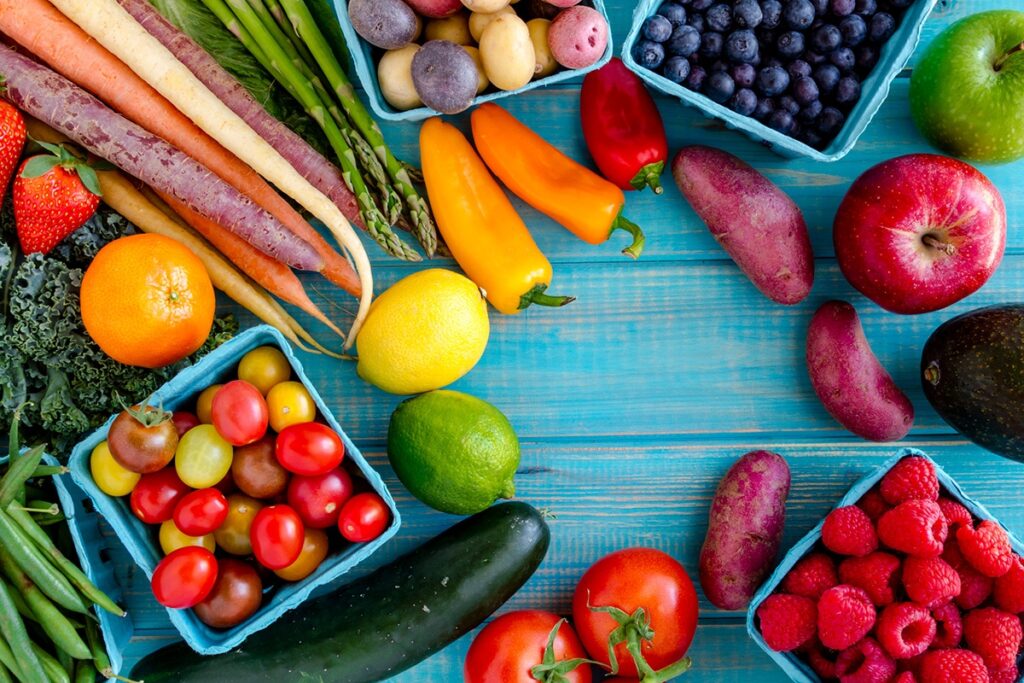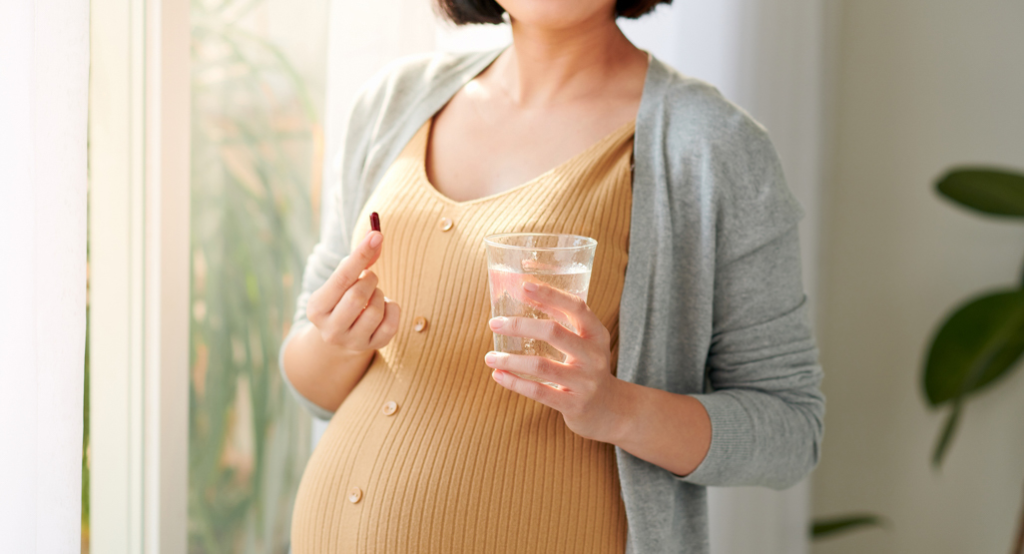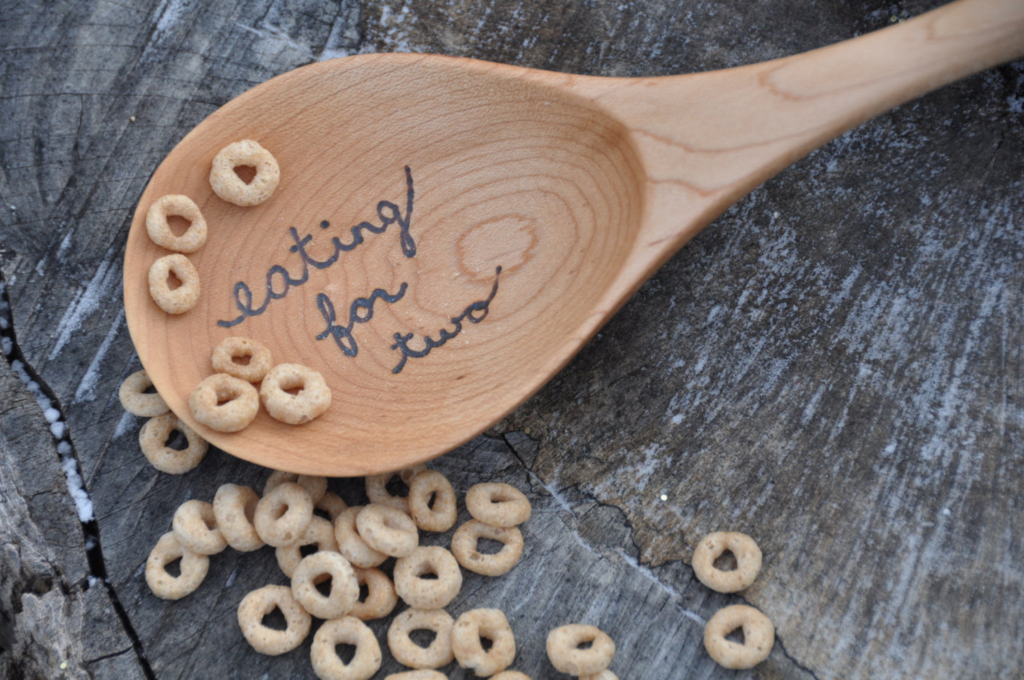Hey there moms to be! First of all, congratulations, you are going to be a mom soon. We know how excited as well as nervous this can make you. You are going to give birth to another beautiful human being. Well, the first rule of pregnancy that you need to follow is- “Bye-bye street food!” You cannot compromise on the nutrition and the portions. No dieting, no more food skips, there isn’t a very rigid diet that you need to follow, but there are certain food items that you can include in your routine so that your little champ receives all the right vitamins and minerals for healthy growth.
When creating a healthy eating plan, focus on whole foods that provide you with more of the nutrients you need than when you’re not pregnant, such as:
- vitamins and minerals
- high protein content
- fats and complex carbohydrates that are good for you
- hydration and fibre
Fun Facts To Know About Pregnancy Diet
- During pregnancy, a woman’s calorie consumption increases only by a few hundred calories each day. So contrary to popular opinion, you do not have to eat for two!
- If the mother is carrying only one child, the typical weight gain varies greatly depending on the mother’s pre-pregnancy weight and other circumstances. A pregnant woman who is underweight is advised to gain more weight than an overweight woman who is recommended to put on less.
- When a woman is expecting, her body absorbs iron more rapidly, and her blood volume rises, so she needs to take more iron to ensure that both she and her baby get enough oxygen.
Eat Well Pregnancy Guide
As previously said, the mother’s diet should be varied, balanced, and nutritious, and it should include:
1. Fruits & Vegetables

At least 5 servings of fruits and vegetables should be consumed each day. Eat rainbow of colours, preferably of fresh local produce. Fruits and vegetables are rich in fibre and help avoid constipation, which is typical during pregnancy. If you’re going to buy canned fruit or veggies, choose ones that are in water or fruit juice and don’t have any added sugar or salt.
Get your 5-A-Day with these helpful hints!
- Breakfast should include fruit, such as sliced bananas, apples, mangoes, berries or any seasonal fruit sprinkled on cereal.
- Cook a variety of veggies, then puree them in a food processor before adding to tomato-based sauces or stews.
- Serve a salad with your lunch or dinner.
- Eat at least three servings of vegetables during your lunch and dinner.
- A piece of fresh fruit, a handful of dried fruit, raw veggie sticks with hummus for dipping, vegetable upma, vegetable uttapam, stir-fried veggies are all excellent options for a snack.
2. Folic Acid

Folic acid, often known as folate when found in foods, is a B vitamin (vitamin B9) that helps prevent neural tube abnormalities – birth disorders affecting the baby’s brain and spinal cord.
According to a 2019 paper published in the journal Obstetrics, Gynecology & Reproductive Medicine, pregnant women who took a 400-microgram folic acid supplementation reduced the incidence of neural tube abnormalities in their newborns by 50%.
Leafy greens, millets, chickpeas, walnuts, legumes, beans, citrus fruits, dry fruits, bread and pasta are all excellent sources of folic acid.
3. Carbohydrate-dense foods with a high starch content
Potatoes, rice, pasta, and bread are examples of starchy carbohydrate-rich foods. Carbohydrates constitute an important part of a healthy pregnancy diet since they are high in energy.
4. Calcium
It is vital to consume a sufficient amount of calcium regularly. Calcium is abundant in dairy foods such as cheese, milk, and curd. Calcium-fortified soymilk and other plant milk and juices, calcium-set tofu, soybeans, bok choy, broccoli, collards, Chinese cabbage, okra, mustard greens, beans, kale, and soybean nuts should all be considered if the mother is vegan.
5. Zinc
Zinc is an important trace mineral. It is essential for natural development and development, cellular integrity, and a variety of biological processes such as nucleic acid metabolism and protein synthesis.
Zinc is essential for fetal growth since all of these methods are involved in growth and cell division. Chicken, turkey, ham, shrimp, crab, oysters, meat, fish (low in mercury), dairy products, beans, peanut butter, almonds, sunflower seeds, ginger, onions, bran, wheat germ, rice, pasta, cereals, eggs, lentils, and tofu are some of the richest sources of zinc.
Pregnancy and Iron

Iron is a significant component of haemoglobin. Haemoglobin is the primary protein in red blood cells and the oxygen-carrying pigment; it transports oxygen throughout the body.
During pregnancy, the mother’s blood volume nearly doubles, necessitating an increase in iron to produce enough haemoglobin to accommodate all that extra blood.
Most women begin their pregnancies with insufficient iron stores to fulfil their bodies’ rising demands, especially during the third or fourth month. If the mother’s iron levels are depleted, she may become anaemic and is at a higher risk of:
- Premature birth.
- The baby is underweight.
- Stillbirth.
- Death of a newborn.
- During the pregnancy, the mother may experience fatigue, irritability, and sadness.
If the mother becomes anaemic later in the pregnancy, she is more likely to lose a lot of blood when she delivers. The following foods are high in iron:
- Meats like beef, chicken and fish, eggs, dry beans, and fortified cereals
- Iron in meat products, known as heme, is more easily absorbed than iron in vegetables.
- Dried beans, dark green leafy vegetables, wheat germ, and orange juice are examples of foods high in folic acid. That should be consumed to cope up with anaemia.
- Food rich in vitamin C, especially the one belonging to the citrus family
- Green peas, chicken, clams, oysters, spinach, lean meat, all kinds of liver cooked well ( except for fish), beef, tofu, lentils, nuts, unrefined sugar such as molasses (in a limited amount).
Essential Fats
- A pregnant woman’s fat intake should not exceed 30% of her total calories. According to research, a high-fat diet may genetically prepare a baby for future diabetes.
- There are also dangers to pregnancy associated with a high-fat diet; therefore, a balance is required, with monounsaturated and omega-3 fatty acids (often known as “good fats”) being the key fat choices. The reason being the blood flow to the placenta from the mother may reduce due to excess intake of fats.
- A high-fat diet can also cause problems during pregnancy, so a balance is necessary, with monounsaturated and omega-3 fatty acids (commonly known as “good fats”) being the best alternatives.
Fibre
- Fibre is abundant in whole grain foods, including wholemeal bread, wild rice, whole grain pasta, pulses like beans and lentils, fruit, and vegetables.
- Constipation is more common in women during pregnancy, and eating plenty of fibre can help to reduce that risk. According to studies, haemorrhoids, which become more common as the fetus grows, can be reduced by consuming a high-fibre diet throughout pregnancy.
Weight Gain Facts to Note During Pregnancy
- During pregnancy, weight gain tends to ebb and flow during the nine months. It’s difficult to tell where pregnancy weight goes, she says, because a scale can’t tell whether the extra pounds are due to a woman’s body fat, baby weight, or fluid growth.
- Don’t worry about the number on the scale; focus on the fact that the baby is growing well during routine prenatal appointments.
- The total calorie intake required per day during pregnancy is determined by a woman’s height, weight before pregnancy, and daily activity level. Underweight women require more calories during pregnancy, while overweight and obese women require fewer.
- Weight Gain Rate in Pregnancy: Women who are underweight or have a normal weight gain about 1 pound per week on average throughout their second and third trimesters of pregnancy, while women who are overweight or obese gain roughly half a pound (225 g) every week.
Myth About Eating For Two

- When people say a pregnant woman should “eat for two,” they don’t mean she should eat twice as much or ingest twice as many calories.
- During the first trimester, a woman does not eat for two weeks. During the first three months of pregnancy, women’s calorie requirements are essentially the same as they were before becoming pregnant.
- During the second trimester, pregnant women should increase their calorie consumption by 200 calories. During the third trimester, when the baby is growing rapidly, they should raise their calorie intake by 300 calories.
- That’s all for today, folks. Let us know your opinions about pregnancy and die, and weight changes in the comments section below!
